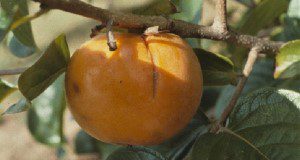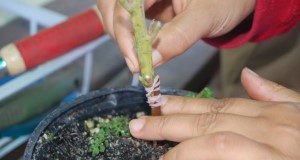Persimmons are considered a relatively sustainable crop in Florida, rated as a 6 out of 10 on an assessment of agricultural sustainability, with a moderate commercial potential and high direct-to-consumer potential. Trees grow and fruit best in central and northern Florida and can produce high yields of good-quality fruit. This new 13-page publication of the UF/IFAS Horticultural Sciences Department describes how to propagate and establish persimmons in Florida, while also providing information on irrigation, fertilization, harvest, pests, diseases, and more. Written by Ali Sarkhosh, Dustin M. Huff, and Peter C. Andersen.
https://edis.ifas.ufl.edu/hs1389
Tag: grafting
Tropical and Subtropical Fruit Propagation
Propagation is an important technique used by tropical and subtropical fruit growers worldwide, allowing plants to be grown cheaply and efficiently. While sexual propagation (by seed) results in plants that are not genetically the same as the mother plant, asexual propagation (cuttings, division, air-layers, and grafting) creates offspring that are clones of the mother plant. Cloning fruit trees is important because it allows different cultivars to be preserved over time. This new 7-page publication of the UF/IFAS Horticultural Sciences Department explains both sexual and asexual propagation techniques, why they are used, and what type of propagation is best for which species of tropical fruit. Written by Jeff Wasielewski and Carlos Balerdi.
https://edis.ifas.ufl.edu/hs1349

